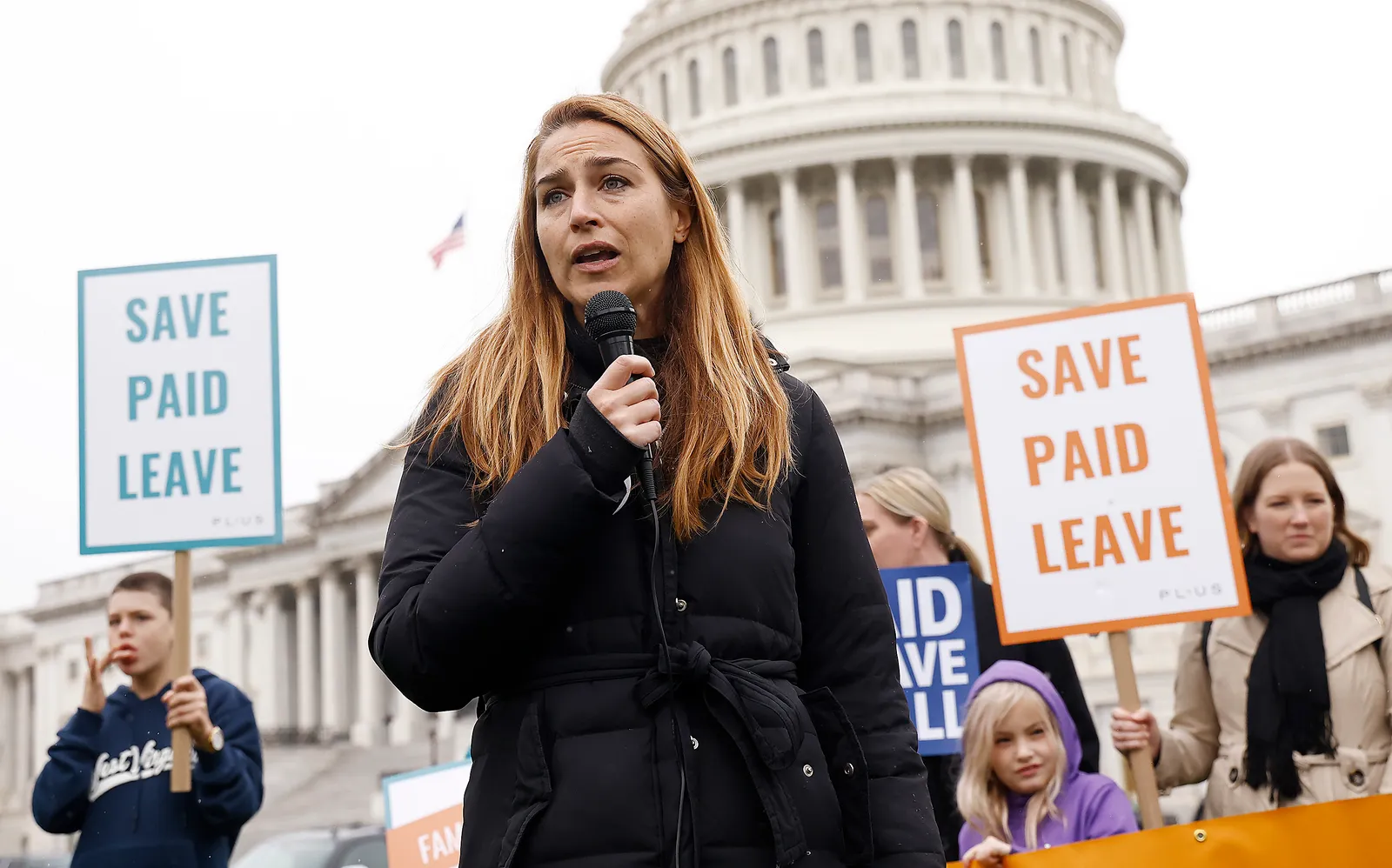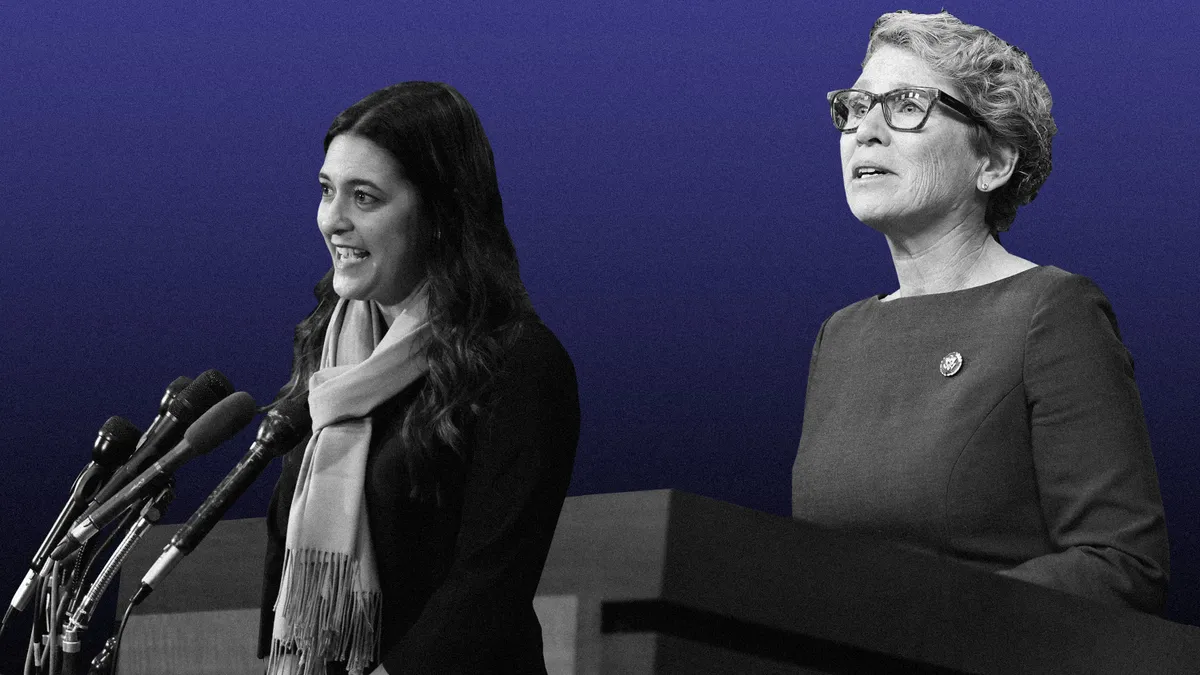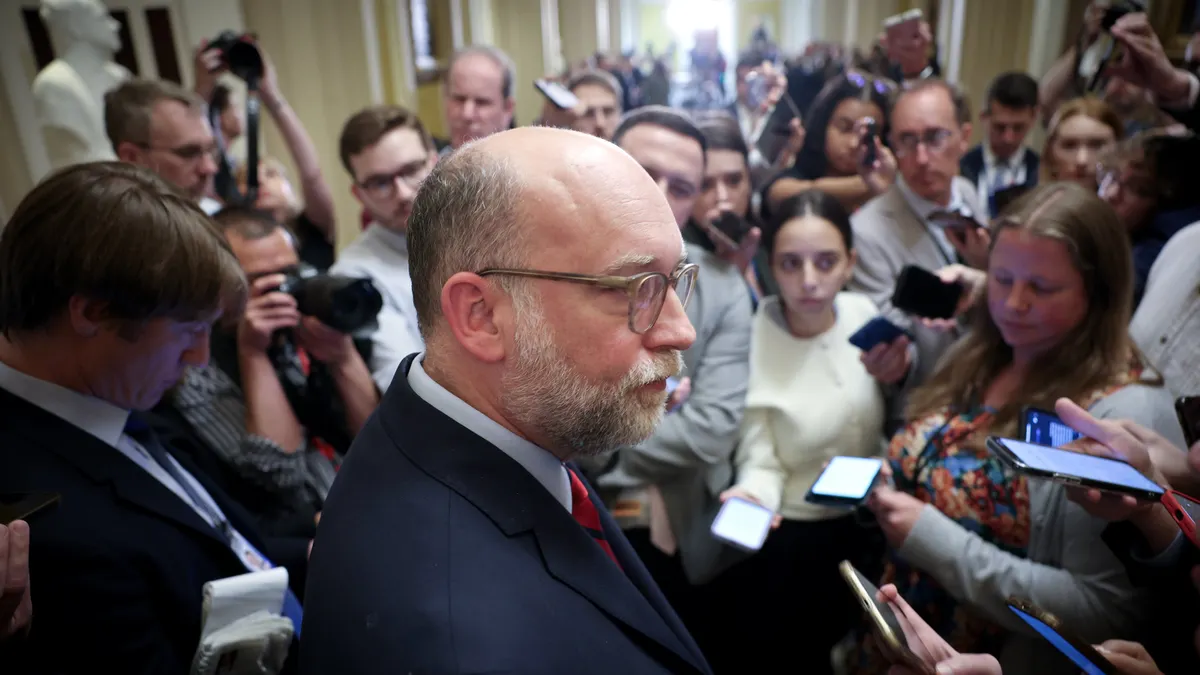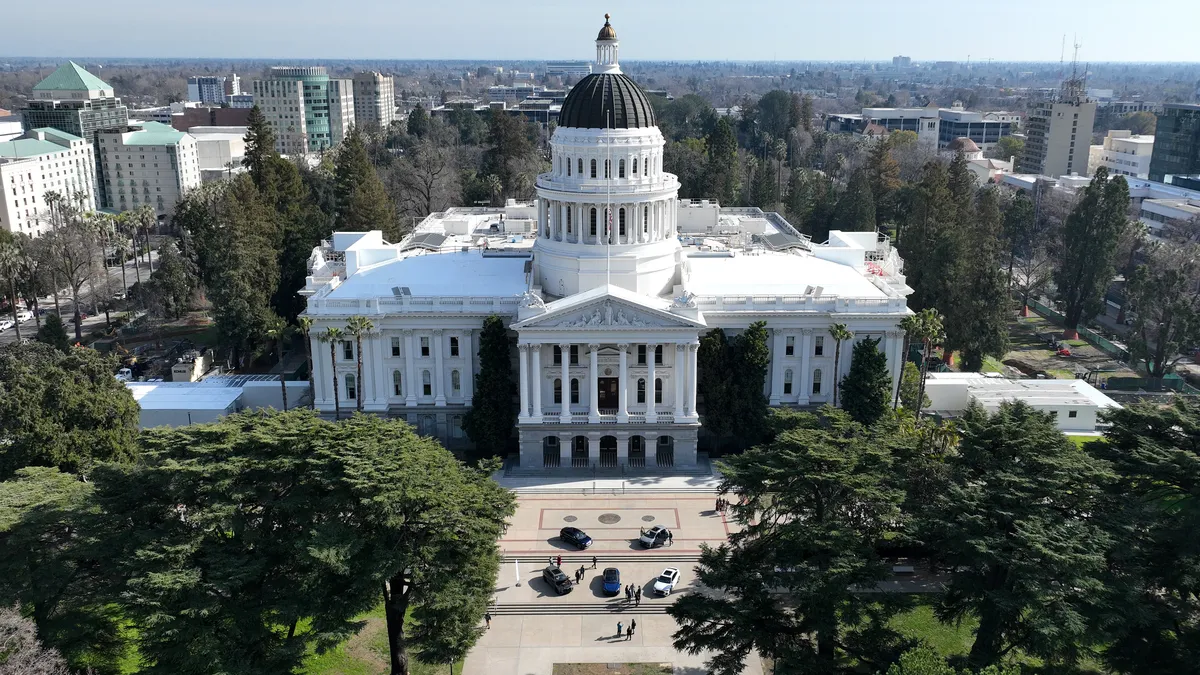Like many other areas of policy, federal paid family and medical leave is one proposal that rises again and again in Washington, D.C. — only to get shot down every time. Most recently, Congress included a paid family leave provision in the Build Back Better Act, which passed the U.S. House of Representatives in November 2021.
The provision was pulled after Congressional Democrats failed to reach a compromise with Sen. Joe Manchin, D-W.Va., and then added back in a truncated format. While the Build Back Better Act failed to pass Congress on its own, parts were eventually incorporated into the Inflation Reduction Act, which was signed into law in August 2022 — but not paid family or medical leave.
Why is it so hard for the federal government to commit to paid family and medical leave? And will it ever come to pass? HR Dive spoke with some experts for the low-down.
A bipartisan effort arises
Paid family leave has been reduced or dropped from legislation five times since March 2020, according to a report from CNN. These efforts have generally been proposed or supported on a party-line basis.
But recently, the Bipartisan Policy Center, a D.C.-based think tank that brings politicians from across the aisle together on policy solutions, formed a task force on paid family leave. Spearheaded by Reps. Stephanie Bice, R-Okla., and Chrissy Houlahan, D-Pa., the group aims to dig through a set of policy proposals and existing law — including the Family and Medical Leave Act — to help it create a framework for bipartisan legislation it can introduce in Congress. It plans to have a bill within the next 1-2 years, said Ben Gitis, associate director for the center’s economic policy program.
In addition to Bice and Houlahan, the task force has four other members: Reps. Colin Allred, D-Texas; Julia Letlow, R-La.; Mariannette Miller-Meeks, R-Iowa; and Haley Stevens, D-Mich.
Gitis told HR Dive there is reason to think the effort might pan out this time. “The Congresspeople involved are very enthusiastic about it,” he said. “They’re excited about the prospect of getting something done. And I think they’re willing to do the hard work to make these difficult choices when designing a program.”
The BPC’s task force comes with the promise that legislation will be introduced through regular order, rather than through a budget reconciliation process — addressing one of the qualms Sen. Manchin expressed with the paid leave provision originally included in the Build Back Better proposal.
Within Congress, Sen. Bill Cassidy, R-La., has also been a strong advocate for paid family leave on the right, bringing more of a bipartisan focus to what has traditionally been viewed as a liberal issue. In 2019, Cassidy partnered with Kyrsten Sinema, D-Ariz., to advance a federal paid family leave plan, which would give parents the option to borrow against their future Child Tax Credit entitlements.
The current cultural context may provide some incentive to move on the issue as well, Gitis noted. “We just went through this big pandemic where, you know, a lot of people thought about reprioritizing what’s most important,” he said. “I think lawmakers are paying attention to that.”
The declining birth rate is another factor that may motivate politicians, with some worried about the potential impact on the economy and existing entitlement programs. It’s very difficult to balance having children with growing one’s income and savings, Gitis pointed out, making a policy like paid family leave important to support both efforts.
Reason to doubt
While enthusiasm for a solution in D.C. and around the country may be high, the details stand in the way, as they usually do when it comes to moving forward on policy. Both Jeff Nowak, FMLA expert and shareholder at Littler Mendelson, and Terri Rhodes, CEO at the Disability Management Employer Coalition, said they have little confidence the federal government will pass sweeping leave legislation anytime soon.
“There was a golden opportunity with Democrats controlling both houses of Congress to pass some form of paid leave legislation,” Nowak said. “And for whatever reason, that didn’t happen. That was the best opportunity for that to come into form.”

Rhodes noted she felt most hopeful about the prospect during a pre-pandemic DMEC conference at which a wide variety of interest groups and politicians expressed enthusiasm for the policy. But two issues cemented the groups’ inability to move forward then, and the same issues seem to remain today, she said: “They can’t agree how it’s going to be managed, and they can’t agree how it’s going to be funded.”
Democrats have favored a “traditional social insurance approach,” Gitis explained. Sen. Kirsten Gillibrand, D-N.Y., and Rosa DeLauro’s, D-Conn., FAMILY Act, for example, would authorize the government to collect a payroll tax that both employers and employees would pay into — a model used by states like California and New York.
Alternatively, Republican proposals, of which there have been several varieties, tend to focus on helping workers afford their own leave, Gitis said. Common suggestions include tax credits, tax-favored savings accounts and providing workers the option to receive time-and-a-half time off rather than time-and-a-half pay when they work overtime. Sens. Marco Rubio, R-Fla., and Mitt Romney, R-Utah, put forward a bill in 2021 that would allow workers to borrow against their future Social Security funds.
Advocacy groups and think tanks have disagreed vehemently with opposing ideological approaches. The Center on Budget and Policy Priorities’ director of Social Security and disability policy, Kathleen Romig, called the conservative Cassidy-Sinema plan “not paid leave but rather a loan that families would have to repay,” while Americans for Tax Reform said the Gillibrand-DeLauro proposal would “[burden] low-income Americans with yet another left-wing tax hike.”
Among the business community, Gitis said, there tend to be two “largely different” groups: large, multinational employers, which tend to be in favor of federal paid family leave (and tend to offer it privately as a benefit), and smaller employers, which tend to provide more pushback. Currently, only about 44% of U.S. workers are covered by the FMLA, which doesn’t apply to organizations with fewer than 50 workers. “If you have only five workers, having one worker away for 12 weeks is a big chunk of your workforce,” Gitis pointed out.
In addition to funding concerns, politicians face a multitude of questions about what a paid family leave policy would encompass. Should it be limited to parental leave, or include medical leave as well, as the FMLA does? How long a leave should the law allow? How inclusive should the law be for different family and medical situations?
The headache is enough for federal politicians to punt to the states — which are quickly filling in the gap. “The state and local governments have been and will continue to be the leaders when it comes to paid leave,” Nowak said.
A complicated patchwork remains
Thirteen states have paid family and medical leave laws, along with Washington, D.C. The momentum is spreading — eight of those states have such laws already in place, the remaining five will soon go into effect. More are expected to join that group every year, Nowak said.
Employers in certain locations are managing exceptionally complicated paid leave situations, Rhodes said. Pointing to California as an example, she noted that there’s a state disability law and a paid sick leave law, in addition to paid family leave. An employee in San Francisco has rights that a worker outside San Francisco may not have, and if that employee is pregnant, they also are entitled to pregnancy disability leave.
An employer in multiple states needs to figure out how to integrate all the local and state laws for a potentially large number of employees, Rhodes said — as well as notify employees of their entitlements and how they’ll be paid.
While a federal law would eliminate some of the complications — and potentially, depending on its scope, even cause the sunsetting of some state or local laws — employers still need to understand the details of each law. They may apply to different family members, may include different entitlements for rate of pay, and may have different hours for eligibility, Rhodes said.
While outsourcing is available and some software has been developed to aid employers in understanding compliance, a high percentage of respondents to a DMEC survey said they still manage family and medical leave requirements themselves. “The best thing to do would be to wipe it all clean, and start with just a paid federal program,” Rhodes said. “I don't think that will happen.”
How the FMLA could evolve
With reason to doubt the emergence of a federal paid leave program, is it possible politicians will amend the FMLA to address other elements of the law? Nowak and Rhodes suggested some provisions could use an update.
“During the pandemic, nobody could get in to see a doctor,” Rhodes said. “And so they had to allow telemedicine and put some parameters around that.” While the government has so far been silent on post-pandemic protocol, “I think that’s here to stay,” she ventured.
Certain provisions could use a makeover to bring them in line with modern notions of family life as well, Rhodes said. The FMLA focuses on biological, nuclear family structures of spouses, parents and children, without accounting for differing care arrangements that might involve, for example, uncles and aunts. In 2015, the U.S. Department of Labor revised its regulatory definition of “spouse” to include same-sex marriages.
“One area I could see both parties rallying around is the concept of bereavement leave,” Nowak said, noting both employers and employees could potentially support this type of leave expansion as part of the existing law. “It seems to be FMLA low-hanging fruit, I guess.”




















